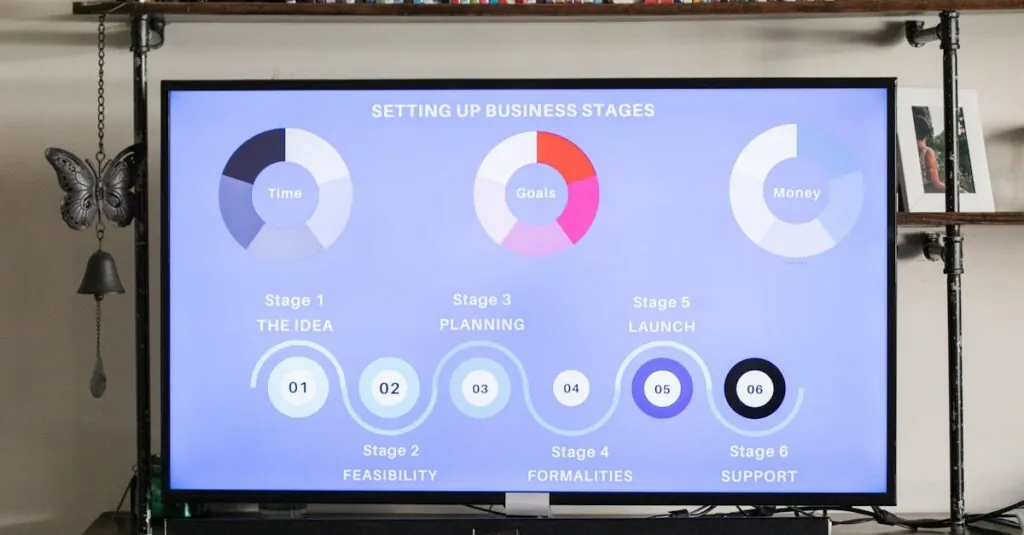In a world where hustling is glorified, the idea of taking unpaid time can feel downright scandalous. But what if this strategy could be your secret weapon for success? Imagine trading in those endless hours for a well-deserved break, all while boosting productivity and creativity. Sounds like a dream, right?
Overview of Unpaid Time Strategy
Unpaid time off offers a unique approach to work-life balance, emphasizing the benefits of stepping away from daily responsibilities. This strategy presents opportunities for increased productivity and enhanced creativity.
Definition and Importance
Unpaid time off refers to a period when individuals take leave from work without compensation. This approach is significant as it fosters mental clarity and rejuvenation. Taking time away from the demands of a job can lead to better focus and innovation upon returning. Organizations that support this strategy often see an improvement in employee morale and decreased burnout rates. Prioritizing mental health and personal time creates a culture of well-being and can enhance overall team performance.
Key Features
Key features of an unpaid time strategy include flexibility, personal growth, and organizational support. Flexibility allows individuals to choose their leave duration, tailoring it to their personal needs. Personal growth occurs as employees explore interests outside of work during these breaks. Additionally, organizational support is crucial; leaders should advocate for such practices to normalize the concept of unpaid time off. Improved workplace dynamics often follow, promoting a healthier work environment.
Benefits of Unpaid Time Strategy
Taking unpaid time off offers numerous benefits for both individuals and organizations, significantly improving overall productivity and satisfaction. The following subheadings detail key advantages.
Increased Employee Well-being
Enhanced well-being emerges when employees embrace unpaid leave. Time away from work allows individuals to recharge, leading to reduced stress levels. Increased mental clarity often follows, enabling workers to approach tasks with renewed focus. Employees who prioritize their mental health frequently report greater job satisfaction. Unpaid leave fosters opportunities for personal reflection and growth. Therefore, organizations promoting this strategy often see higher employee morale and engagement.
Improved Work-Life Balance
A healthier work-life balance emerges through unpaid time strategy implementation. Employees gain freedom to explore personal interests and responsibilities outside of work. Prioritizing personal life alongside professional duties leads to more fulfilled individuals. Once individuals return to work, they often exhibit improved focus and creativity. They reconnect with their passions, which translates to better workplace performance. Organizations recognizing the importance of this balance can cultivate a more supportive and productive environment.
Challenges of Implementing Unpaid Time Strategy
Implementing an unpaid time strategy presents several challenges. Each organization must navigate these potential issues to optimize the benefits.
Potential Drawbacks
Employees may encounter financial strain while taking unpaid leave. This strain can deter individuals from pursuing time off, impacting their overall well-being. Job security concerns also arise; employees might worry about their position during extended absences. Such worries can create hesitance in utilizing unpaid leave. Furthermore, potential productivity loss occurs when employees take unpaid time away, disrupting workflows. This disruption can lead to increased pressure on colleagues to compensate for absent team members. Taking unpaid time requires careful consideration of these drawbacks to ensure individuals feel supported while pursuing personal rejuvenation.
Resistance from Management
Management often harbors concerns about the implications of unpaid time off. Many leaders fear potential negative impacts on team productivity and cohesion, believing an absence disrupts momentum. Additionally, apprehension about setting a precedent can lead to hesitation in approving unpaid leave requests. Some managers may also feel unprepared to handle the administrative challenges that come with policymaking surrounding unpaid leave. Resistance frequently stems from a limited understanding of the long-term benefits this strategy can provide. Overcoming management resistance requires clear communication of the advantages, encouraging leaders to embrace an approach that prioritizes employee well-being and organizational success.
Case Studies of Successful Implementation
Various organizations demonstrate the effective use of unpaid time strategies, showcasing benefits for both employees and businesses. These case studies offer key insights into successful implementation and observable outcomes.
Company A: Strategy Overview
Company A adopted an unpaid time strategy to promote employee well-being. Employees were allowed to take up to four weeks off without pay each year. The management encouraged staff to use this time for personal projects or rest. By normalizing this practice, Company A aimed to enhance job satisfaction and reduce burnout. Flexibility in choosing leave duration proved essential for accommodating diverse employee needs. Employee feedback indicated a marked increase in morale following the launch of this initiative.
Company B: Impact Analysis
Company B observed significant improvements after integrating an unpaid time initiative. Surveys revealed a 30% boost in overall employee engagement within six months. Employees reported enhanced creativity and focus upon returning from unpaid leave. Productivity metrics showed consistency, disproving initial concerns about workflow disruption. Furthermore, retention rates improved, as staff felt supported and valued. The organization’s commitment to mental health directly contributed to this success, fostering a more supportive work environment.
Embracing an unpaid time strategy can transform both individual and organizational dynamics. By prioritizing mental health and work-life balance, employees can recharge and return with renewed focus and creativity. Organizations that support this initiative often see enhanced morale and engagement, leading to a more productive work environment.
While challenges exist, the long-term benefits significantly outweigh the drawbacks. Clear communication and leadership support are crucial in overcoming resistance and fostering a culture that values well-being. As more companies recognize the importance of unpaid time off, they pave the way for healthier, happier workplaces where everyone can thrive.





